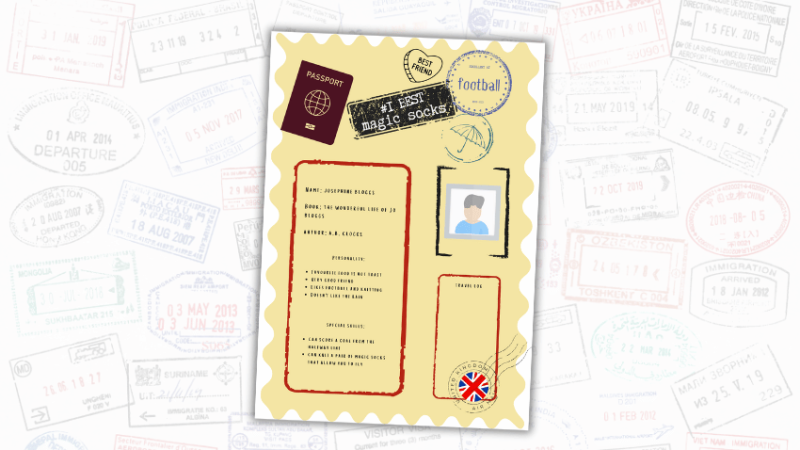Connectives – 24 of the best grammar worksheets and resources for KS2 SPaG

Help children link words and phrases together with these activities and ideas for conjunctions, adverbs and prepositions…

- by Teachwire
- Classroom expertise and free resources for teachers

What are connectives?
Connectives are words or phrases that link two parts of a sentence together.
However, connectives is a term that is, of course, no longer on the curriculum, as children are encouraged to use the terms that denote the three types of connectives:
- conjunctions
- adverbs
- prepositions
So, here we’ve separated some handy resources into the three sections for use in Years 3-6.
Conjunctions
What is a subordinating conjunction?
A subordinating conjunction introduces a subordinating clause, and joins it to the main clause in a sentence.
1 | Year 3 subordinating conjunctions resources
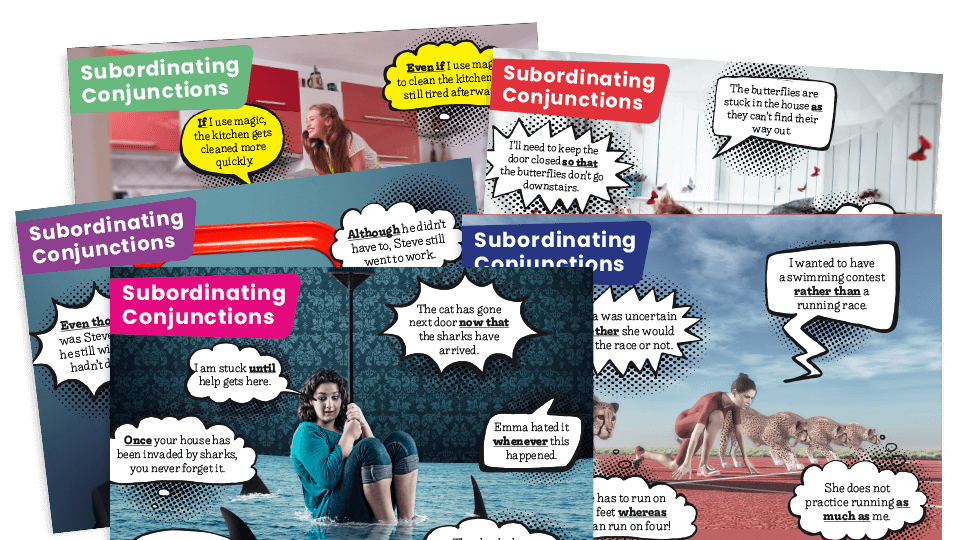
For lower-KS2 there is a selection of resources to use that are all bright and appealing.
The classroom display pack (pictured above) features a set of six posters illustrating a range of subordinating conjunctions, using eye-catching images surrounded by example sentences. Plus, you get blank versions of the posters so children can add their own text suggestions.
Then there’s this subordinating conjunctions resource pack that includes a PowerPoint, a challenge sheet, an extension sheet, conjunction cards, a writing plan and teacher’s notes.
And there’s also a Year 3 subordinating clauses challenge worksheet in the same style as the Year 2 worksheets shown previously.
Check out all these conjunctions resources here.
2 | Subordinating and coordinating conjunctions worksheets
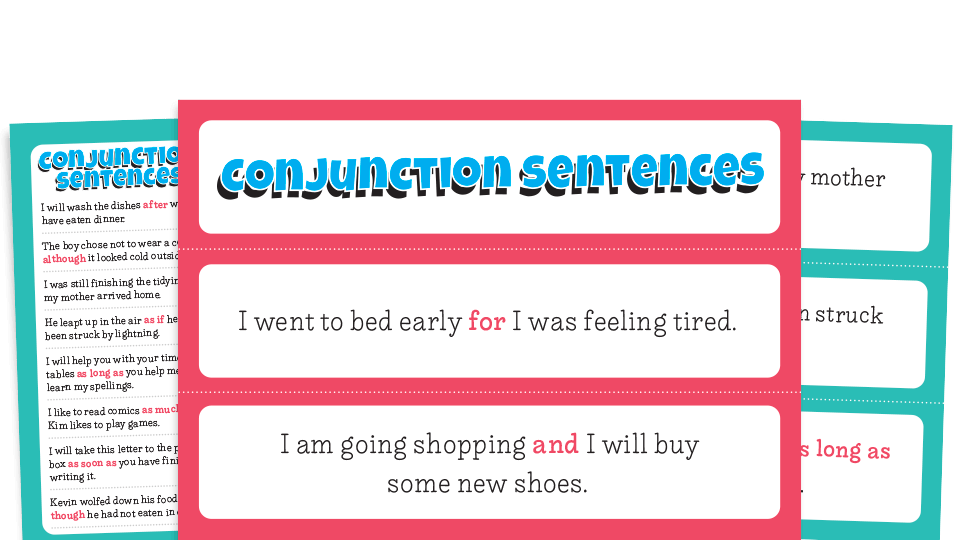
If you’re teaching subordinating and coordinating conjunctions together, this KS2 grammar resource provides model sentences for over 50 different conjunctions, including FANBOYS (‘For’, ‘And’, ‘Nor’, ‘But’, ‘Or’, ‘Yet’, ‘So’)
It’s perfect for display and table activities in Year 3 and 4, as well as revision in Year 5 and 6
3 | A White Bus mnemonic
This song, set to the tune of ‘We Like to Party! (The Vengabus)’ by The Vengaboys, is designed to help children to recall some key subordinating conjunctions using the mnemonic ‘A White Bus’ (also commonly extended to ‘On a White Bus’):
- Once, Only if
- Now that
- After, although, as, as long as, as though
- When, whenever, where, whether, which, while
- How, however
- If, in case
- Than, that, therefore, though
- Even if, even though
- Because, before
- Unless, until
- Since, so that
4 | Subordinating vs coordinating conjunctions
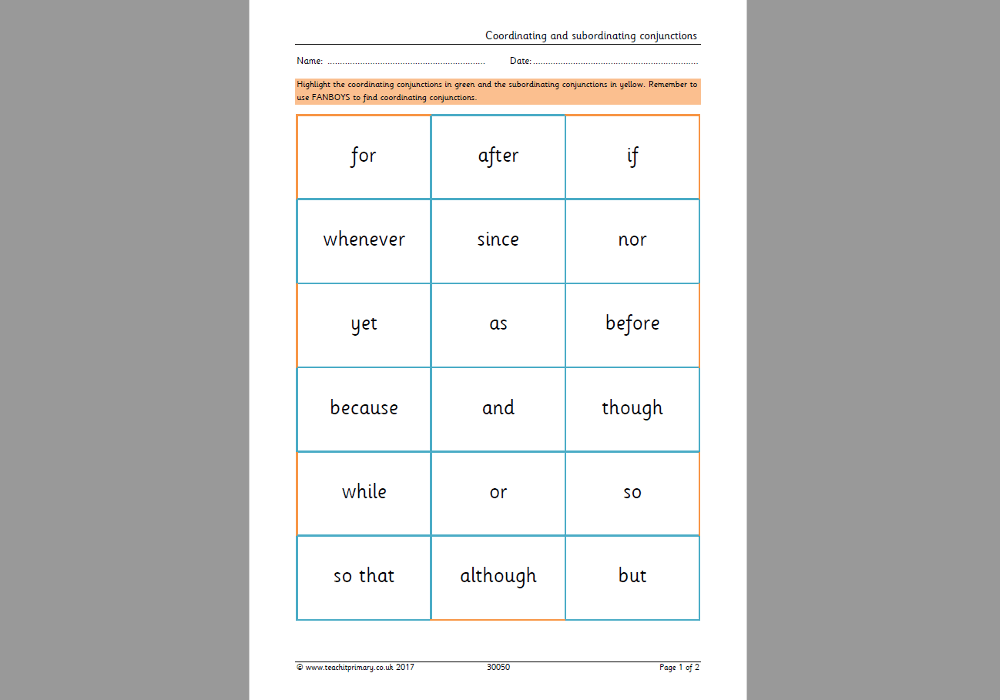
This worksheet asks students to pick out which conjunctions are subordinating and which are coordinating. An answer sheet is included.
5 | Year 6 conjunctions story starters
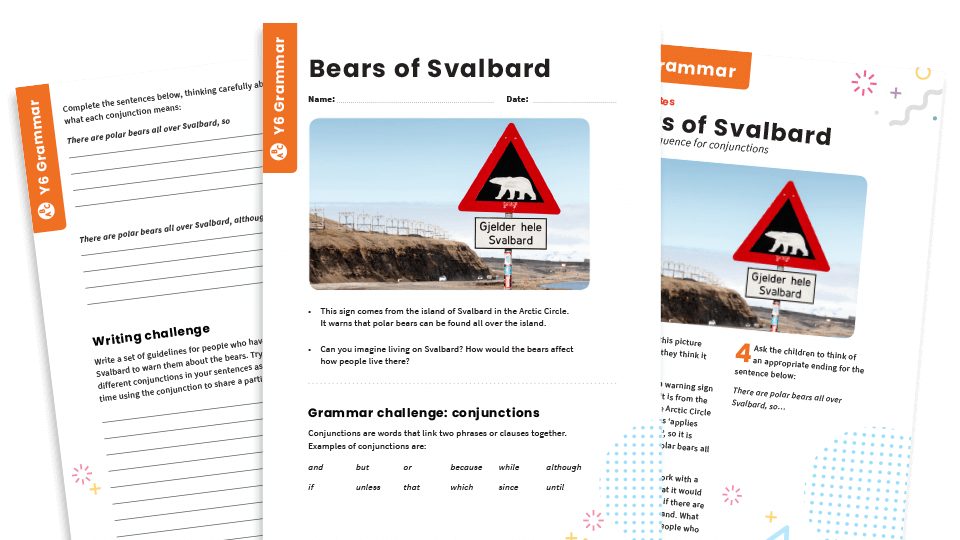
This teaching sequence has been designed to help children revisit and recall conjunctions in Y6.
The session provides a motivating and memorable image to stimulate discussion, and children have time to practise using conjunctions, before undertaking a short writing task to apply what they have learnt in the context of creative writing.
Prepositions
What is a preposition?
The School Run explains that prepositions are “linking words in a sentence” and that “We use prepositions to explain where things are in time or space.
“Prepositions tell us where something is (for example, beside, under, on, against, beneath or over) or when something is happening (for example: until, during, after, before or more specifically ‘on Christmas Day’, ‘at 12 o’clock’ or ‘in August’).
6 | Preposition cards and posters
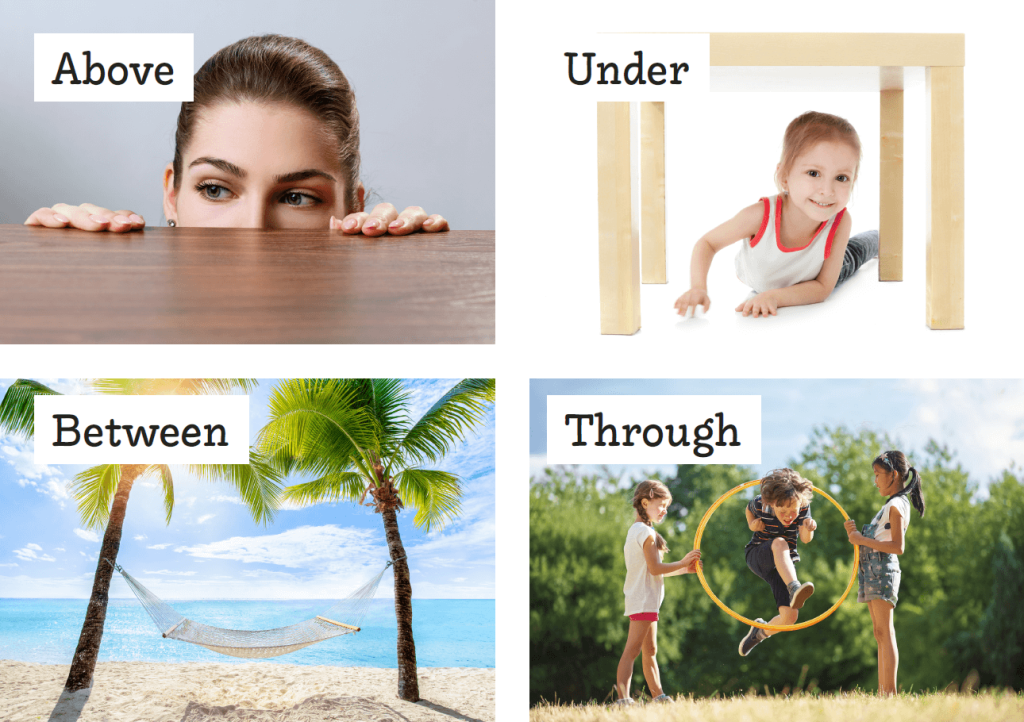
This free pack contains posters and cards illustrating 19 different prepositions to support activities in KS2 SPaG/GPS lessons.
There are two versions of each poster – labelled with the preposition and unlabelled – and four sizes – cards for table use, labelled poster, blank posters for your class to add their own text in the speech bubbles provided, giant blank poster.
7 | Prepositions SPaG challenge mat

This review mat for Grammar, Punctuation and Spelling is an excellent way to revise and practise using prepositions.
The worksheets are divided into five different types of activity, including writing challenges and GPS sample test questions.
8 | ‘Can you name all the prepositions?’ quiz

Can you name the complete set of single-word prepositions found in the Merriam-Webster dictionary? You get eight minutes to try to name all 129 of them. Chances are you won’t, but it’s great fun giving it a go.
Plus, you’ll kick yourself when you missed something obvious like ‘under’, or you got ‘on’, but not ‘onto’.
9 | ‘Missing preposition in song titles’ quiz

While you’re in the quizzing mood, why not try this one that we created, which features song titles missing a proposition for children to fill in the blanks.
So even if they’re not entirely sure what a preposition is, they should be able to learn here using the context of the rest of the title.
10 | Prepositional phrases

This Lower Key Stage 2 grammar resource provides everything you need to teach five 15-minute lessons on prepositional phrases.
As well as learning how to identify prepositional phrases and explain their use, children are challenged to come up with creative responses in their writing to this area of grammar, with colourful images included to help inspire their work.
The five SPaG lessons are designed to be taught across one week. Alternatively, you may wish to teach the sessions in larger chunks, spread over a longer period of time, or intersperse them with different grammar, punctuation and spelling lessons.
The resources included in this pack are a PowerPoint, a prepositional phrases worksheet, prepositional phrase cards, a writing plan and an uplevelling writing worksheet.
11 | Pick a preposition worksheet

This worksheet features a set of pupil activities for a lesson on prepositions. Children choose the correct preposition then write their own sentences, before finishing with the challenge of writing a poem using prepositions.
12 | Prepositions and pronouns as writing tools

Teaching grammar well means giving children a functional, flexible set of instruments for lifelong effective communication, says Rebecca Cosgrave.
So, in this article, Rebecca identifies areas of teaching grammar where teachers can often come unstuck, such as prepositions, and provides solutions.
13 | Prepositions worksheet
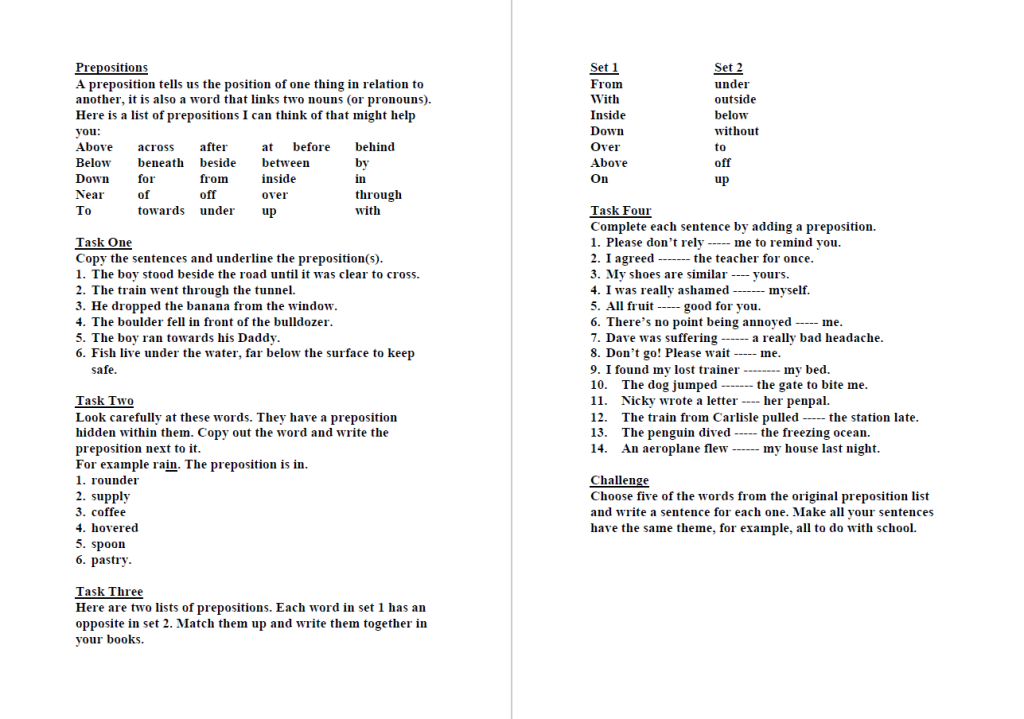
This simple worksheet has four activities and an extension for children to try, from picking out the preposition in a sentence to matching opposite prepositions and completing sentences by writing a preposition in the blank space.
14 | The wrong prepositions worksheet

This next worksheet combines a couple of these ideas. It features a number of sentences that include an incorrect preposition, such as ‘the man fell up the stairs’. Children need to identify it and change it to one that makes sense.
Adverbs
What is an adverb?
An adverb describes a verb. That’s the most basic definition. If a verb is an action, a doing word, an adverb describes how that thing is done.
But it’s obviously a little more than that.
This definition states: “An adverb is a part of speech that provides greater description to a verb, adjective, another adverb, a phrase, a clause or a sentence.”
15 | How to use adverbs
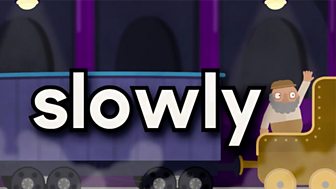
As ever, BBC Bitesize has a good entry on adverbs, with a definition, a short video and an interactive exercise getting children to highlight the adverbs in sentences.
16 | Adverb posters and cards

Another one for younger pupils, this dual-purpose PDF features five pages of brightly coloured adverbs. Print them off and display them as posters, or cut them out to have a whole collection of adverb cards.
17 | Making adverbs by adding -ly
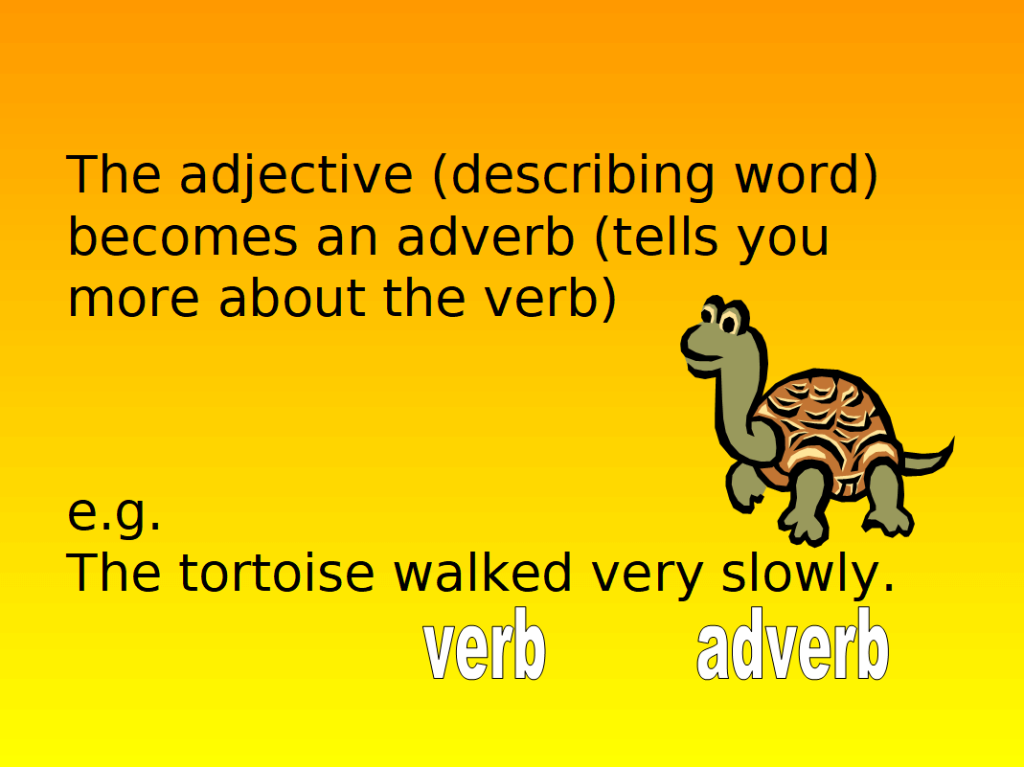
This short five-slide PowerPoint presentation is a nice introduction to creating adverbs by adding the suffix -ly.
There is a list of words for children to quickly practise the rule, a description of how this turns an adjective into an adverb, an explanation of when a word already ends in ‘y’ (like sleepy) and some questions on adding adverbs to fill in the blanks in sentences.
18 | Tricky grammar adverbs worksheets for Y6

This KS2 grammar teaching sequence for adverbs has been designed to help children revisit and remember a key grammatical concept from the National Curriculum programme of study.
The session provides a motivating and memorable image to stimulate discussion, before introducing the grammar element. Children have time to practise using this feature, before undertaking a short writing task to apply what they have learnt in the context of creative writing.
The resource includes teacher notes and a pupil worksheet.
19 | Add adverbs to Paddington
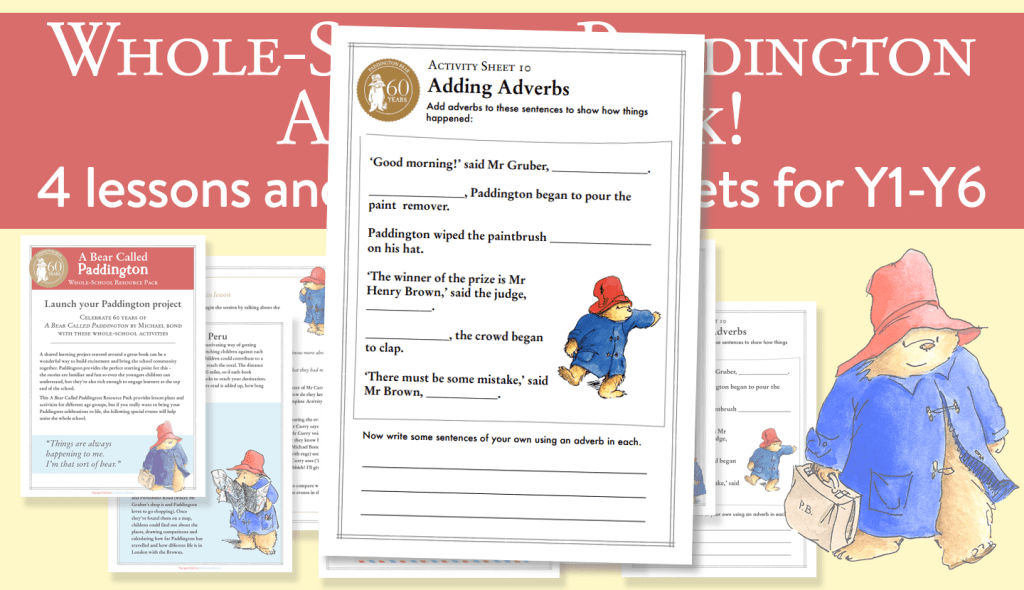
Buried deep within this mammoth Paddington Bear resource is this activity worksheet where children get to add some adverbs to a range of Paddington-themed sentences, as well as write their own sentences using adverbs.
The whole pack from HarperCollins was created to celebrate 60 years of A Bear Called Paddington, and is a whopping 39 pages. Better yet, it’s all free.
20 | Instructional writing with The BFG
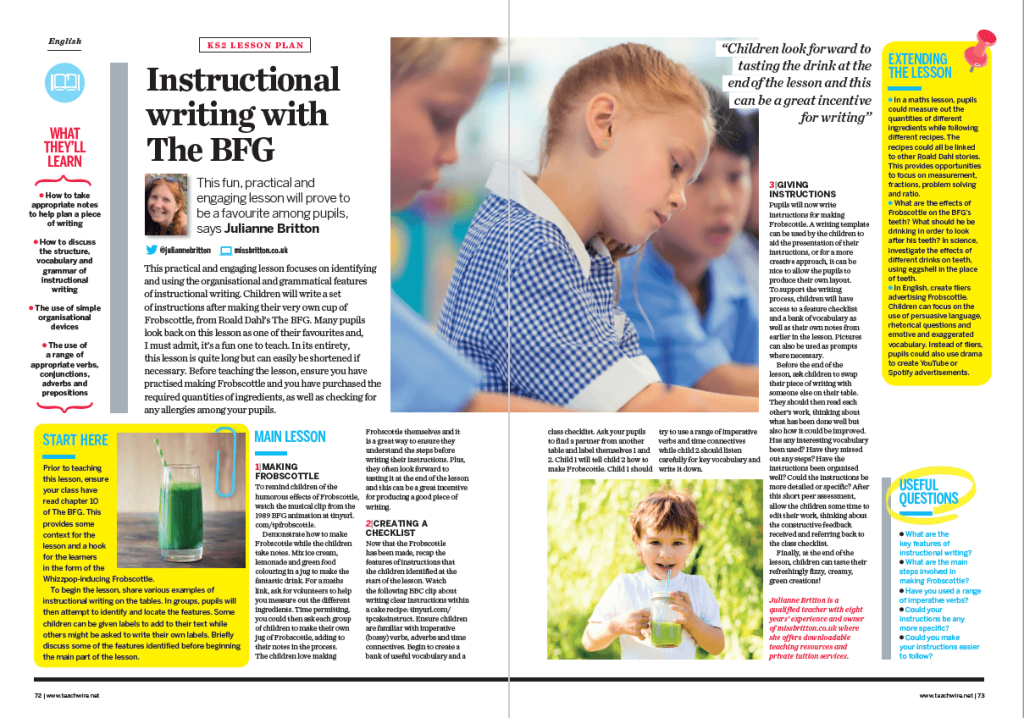
This fun, practical and engaging Roald Dahl lesson from Julianne Britton focuses on identifying and using the organisational and grammatical features of instructional writing.
KS2 children will write a set of instructions after making their very own cup of Frobscottle, and learn about the use of a range of appropriate verbs, conjunctions, adverbs and preposition.
Download this lesson plan here.
21 | How to teach adverbs in KS2
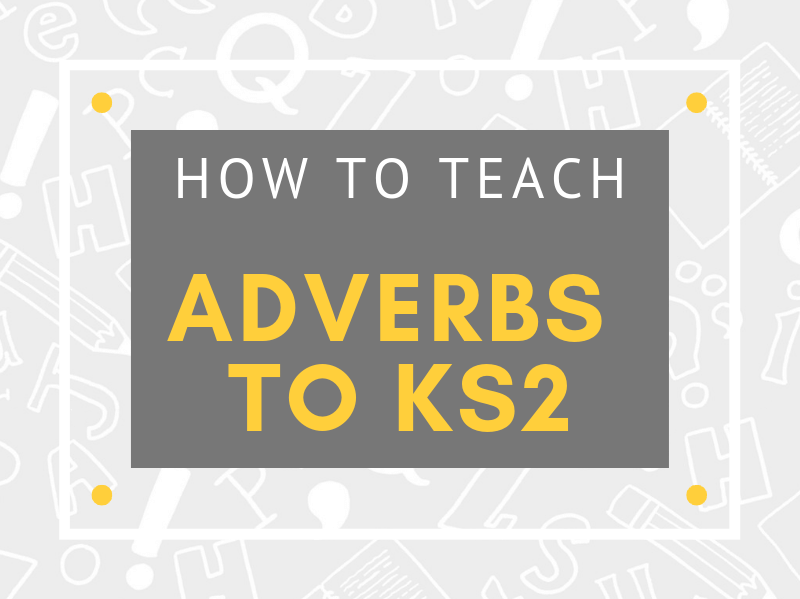
Adverbs may seem a complicated subject, so Headstart Primary enlisted the help of experienced English Grammar and Punctuation teacher, Clive Stack, to break it down.
Here is Clive’s simple approach for teaching adverbs to Key Stage 2.
22 | Adding adverbs to a story

This worksheet is aimed at Year 5 and 6, and gets children to use adverbs to improve their writing.
First they need to identify adverbs in a short passage, then add adverbs to a longer passage to build tension.
23 | Gothic fiction – Goth Girl
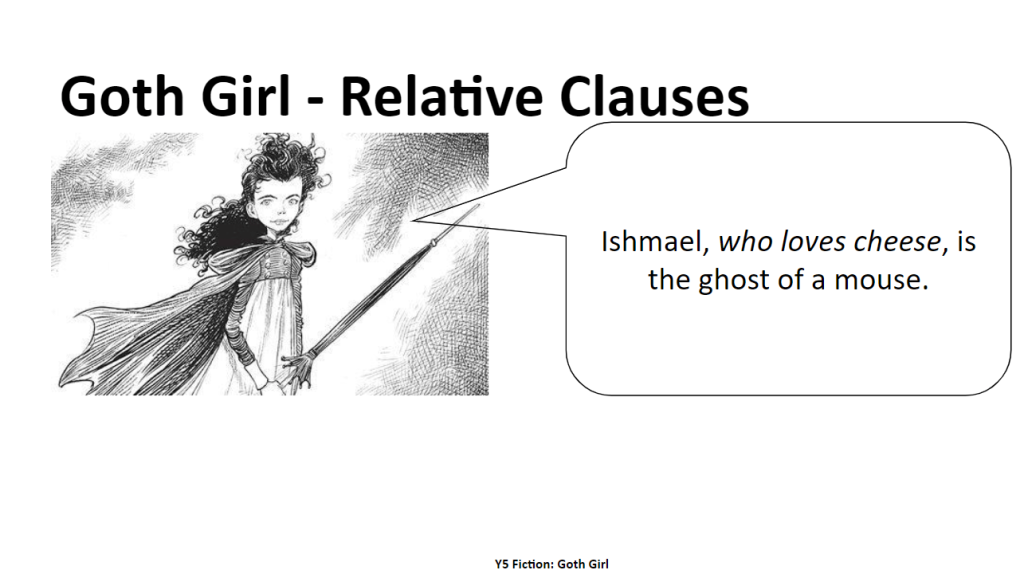
This Year 5 resource pack from Hamilton Trust introduces students to Gothic fiction through Chris Riddell’s Goth Girl.
In it they will look at the features of Gothic fiction, use adverbs to add to the Gothic style, compose Gothic characters, improve and punctuate dialogue, write a new chapter in the Gothic style and much more.
24 | George’s Marvellous Medicine
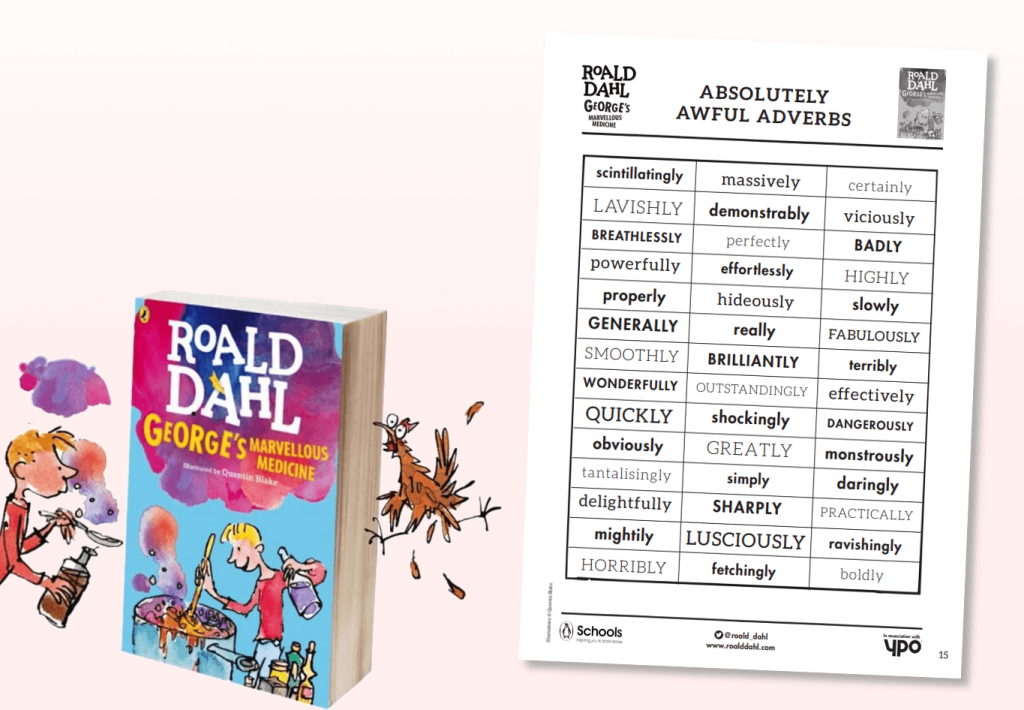
Teach children about adverbs with this lesson plan that includes an activity sheet of ‘absolutely awful adverbs’ examples from Roald Dahl’s classic book.
Then see how your class can take what they’ve learnt about adverbs and apply this to a piece of persuasive writing – including coming up with their own advertising slogans.



